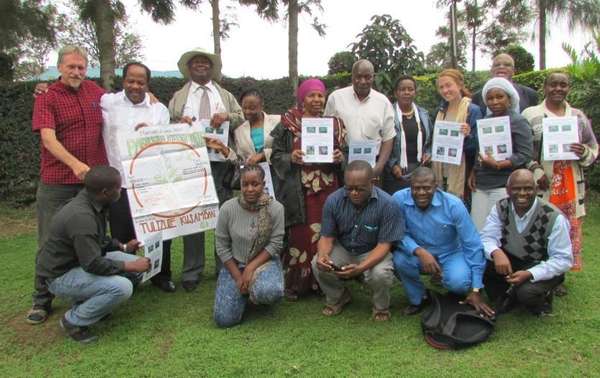Parthenium hysterophorus is a noxious weed which invades roadsides, is allergenic for humans, infests pastures and farmland, causing disastrous loss of yield, as reflected in common names such as famine weed. In many areas, heavy outbreaks affect livestock health, crop production, and human health. Parthenium was first spotted in Arusha in 2010, since then the weed has spread at an amazingly fast rate and is increasingly causing a threat to national food security in Tanzania.
In 2017 a committee was formed to educate and promote awareness of Parthenium to citizens of the Arusha region. The committee consists of twelve persons who have an intrinsic passion for community development and a desire for parthenium to be eradicated. The committee was recognized by Regional Commissioner of Arusha, Tanzania Mrisho Gambo, in October of 2017 at the opening announcement of the committee’s project. With the support of the United States Peace Corps and ECHO the members of the Parthenium Hysterophorus Awareness Committee have been able to travel to rural villages of the Arusha region to combat the spread of Parthenium by educating locals and farmers. The goal of the project to visit fifteen villages of the Arusha Region and educate the greater communities has gained much attention. The project continues to gain support through national and local radio stations, local businesses, governmental researchers and government officers. The committee has successfully trained 54 Arusha regional and local government agriculture and livestock officers. As a result, the Parthenium training is reaching a far wider audience than was planned by the project and the Regional government has created a monthly ‘Parthenium Day’ to encourage the public to eradicate the weed wherever it is present. In the span of two weeks starting February 5, the Parthenium Committee has traveled to six villages across the Arusha Region of Tanzania, impacting just over 830 farmers and hundreds of school students to further understand the dangers of Parthenium. In Tanzania the noxious weed is referred to as “Gugu Karoti”.

The committee found when arriving at various villages, that after farmers were shown which weed is “Gugu Karoti” they were shocked that they had been feeding their livestock the weed and many complained symptoms of skin rashes and hay fever, which the weed is known to cause. Many testimonials have been shared, of farmers who have abandoned farms due to Parthenium overtaking the land. Committee members and volunteers continue to teach farmers, teachers, students, businessmen /women to uproot Parthenium wearing protective clothing and gloves or something to protect one’s hands. Village community members are also taught the use of GM/CCs for suppressing growth of Parthenuim and revitalizing the soil. The ability to continue teaching across the Arusha region would absolutely not be possible without the dedication and countless hours brought by the committee and the many volunteers from ECHO. Given another invasion in 2017 in the region, Fall Army Worm, also encountering an uninformed public, ECHO has combined training about Parthenium with training on how to combat the FAW.
For more information on Parthenium visit this link [http://edn.link/jkcghq].